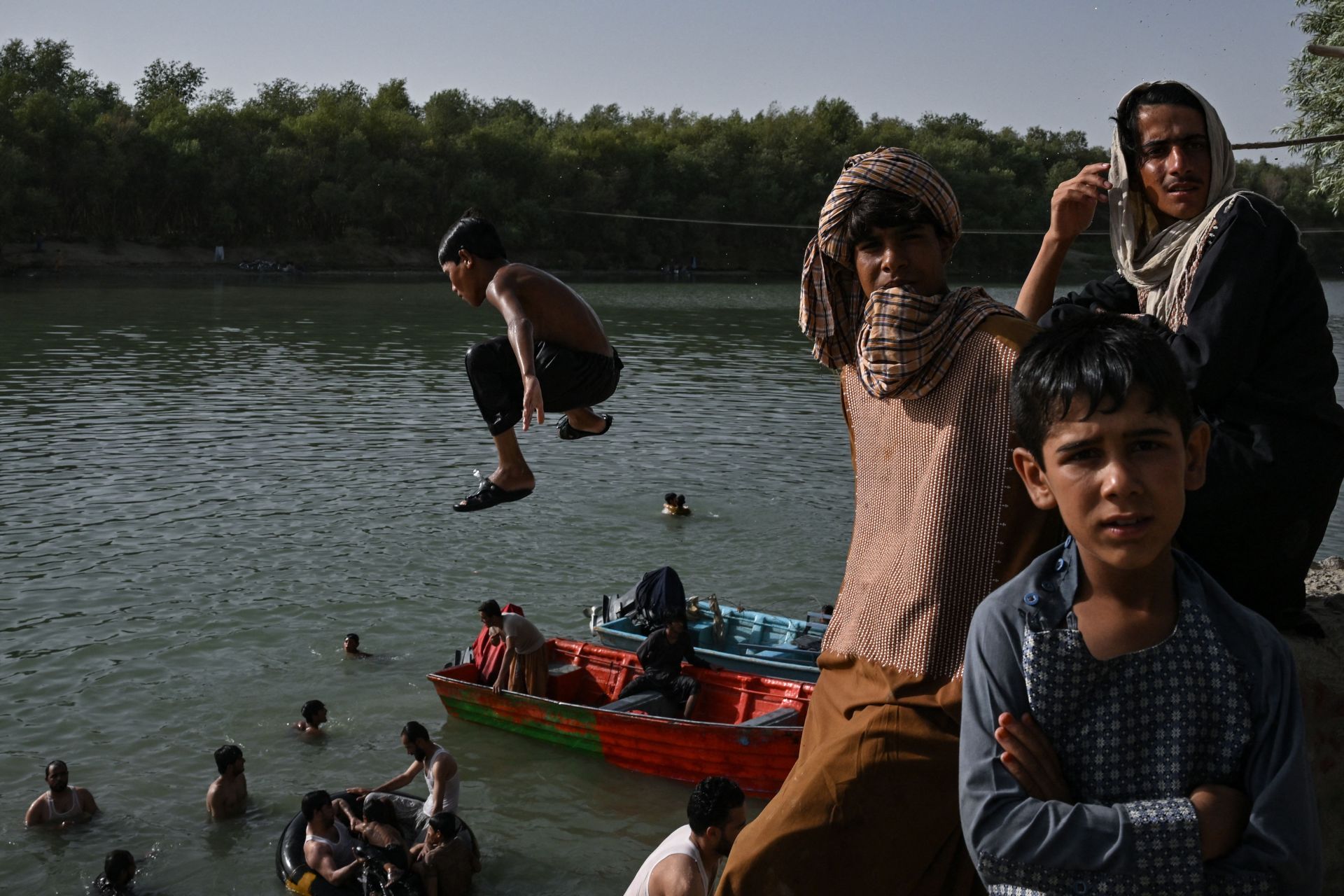“The Iranian president’s provocative speech caused this war,” says Abdul Baqi, 55, a resident of Zaranj, the capital of Afghanistan’s southwestern Nimruz province. Last Saturday, the Taliban and Iranian forces clashed over water rights in this Baluch-dominated region, which is a major trading hub bordering Iran and Pakistan. This is the first clash in which both sides have used heavy weapons to inflict casualties.
The clash comes after Iranian President Ibrahim Raisi’s remarks on the Helmand River during a May 18 visit to Sistan-Baluchistan, whose majority Sunni residents resent the Iranian regime’s sectarian policies. Standing in a crowd in his traditional clerical robe, Raisi said to a female journalist: “I want to tell the rulers of Afghanistan: Don’t consider our issues as usual but take them very seriously. I am warning the officials and rulers of Afghanistan to give the people of Sistan their rights immediately.”
The Iranian president then urged the Taliban to open the Kajaki dam so that Iran too could have its share of Helmand’s water.
The fighting erupted at around 11:00 a.m. on May 27, after a verbal altercation in the village of Mahkaki, in Kang district on the border. Within minutes, a young Talib was dead. Footage posted on social media shows the Taliban retaliating by surrounding an Iranian checkpoint and firing at close range. The clash was over by noon. But at 1:15 p.m., Iranian forces shelled the capital, Zaranj, about 45 miles from the site of the clash. Two artillery shells hit civilian areas near Zaranj’s domestic airport, and three mortars hit another residential area, wounding civilians. Iranian forces were shelling from Koder-Khuja, just across the border. “People hid their families, businesses shut down, but thank God, the war didn’t last long” said Baqi. Normal life had resumed by the next day. “We used to be in war, for us it was normal,” he added.
Situated in a desert, Nimruz is famous for its dunes. It is of strategic significance and has served as a source of income for short-lived Afghan regimes. It was used by the Mujahideen in the ‘90s; by drug smugglers; and by refugees escaping the country’s endless wars and economic crises. Nimruz was the first province captured by the Taliban, on Aug. 6, 2021. Images of a dusty convoy of former Afghan officials, queuing at the Iranian border in their eagerness to flee, shook every official in Kabul.
Kajaki Dam is located on the Helmand River in the Kajaki district of Helmand Province in southern Afghanistan. It was built by the U.S. in the 1950s as part of the Helmand Valley Authority project. At the time, U.S. engineers and experts worked to transform the valley along the Helmand River into a modern and economically viable society. Canals were built to irrigate farms, helping Afghans earn substantial revenues. New schools, hospitals and factories were powered by electricity produced at the Kajaki Dam. But concerns were soon raised by Iran over the Helmand River, which were resolved through U.S. mediation, resulting in the Afghan-Iranian Helmand River-Water Treaty of 1973.
According to the 1973 agreement, Afghanistan is obligated to provide Iran with 850 million cubic meters of water annually from the Helmand River. Iran has accused the newly established Taliban government of not complying with the treaty. The Taliban regime insists, however, that drought has made such commitments impossible. While drought has been a problem in Afghanistan and Iran for a long time, it has worsened over recent years. The Taliban claim that water levels are too low due to climate change, and that even if they open the dam, nothing will reach Iran.
Iran, a regional power, has been deeply engaged in Afghanistan’s various conflicts. Its influence has been mostly malign. During the civil war, Iran backed Hizb-e Wahdat, a mostly Shiite-led, mostly Hazara party in Kabul. The renowned civil war rival Ahmad Shah Masoud claimed that “Iran was after the formation of a second south Lebanon in Kabul, but failed.” Among other things, it supplied the landmines that left many Afghans maimed.
When the Taliban captured Kabul in 1996, Iran transferred its diplomatic mission to Mazar-e-Sharif, a city in the north of Afghanistan. When the Taliban forces recaptured Mazar-e-Sharif in 1998, 11 Iranian diplomats including a journalist were seized from the consulate and disappeared. Days later the Taliban announced that they had found their dead bodies in the outskirts of the city and that they had been killed by renegade forces who had acted without orders. Tensions grew. Iran amassed around 70,000 troops along the border, some at the site of the recent clashes. The situation was volatile. Mawlawi Mohammad Nabi Mohammadi, a Taliban leader, spoke at a gathering attended by hundreds of fighters and ordinary Afghans in Kabul. He urged Iran to stand down. “The naked don’t fear the water,” he said. Days later, the Taliban captured the last stronghold of Hizb-e Wahdat in Bamiyan province, thus taking control of all airports in Afghanistan, denying Iran its only possible landing strip. Iran backed down.
The Taliban seem confident that if they stand firm, Iran will retreat again.
On May 20, The Islamic Emirate of Afghanistan resumed construction on the Kamal Khan Dam, in the Chahar Burjak district of Nimruz. They are also planning construction on another dam in Herat. Similar steps are underway in the eastern part of the country bordering Pakistan. As the effects of climate change worsen and water grows scarcer, this could give the Taliban critical leverage. But it will also intensify conflict. Water is poised to become a greater source of conflict than oil in the future, for both Afghanistan and Iran.
Sign up to our mailing list to receive our stories in your inbox.



